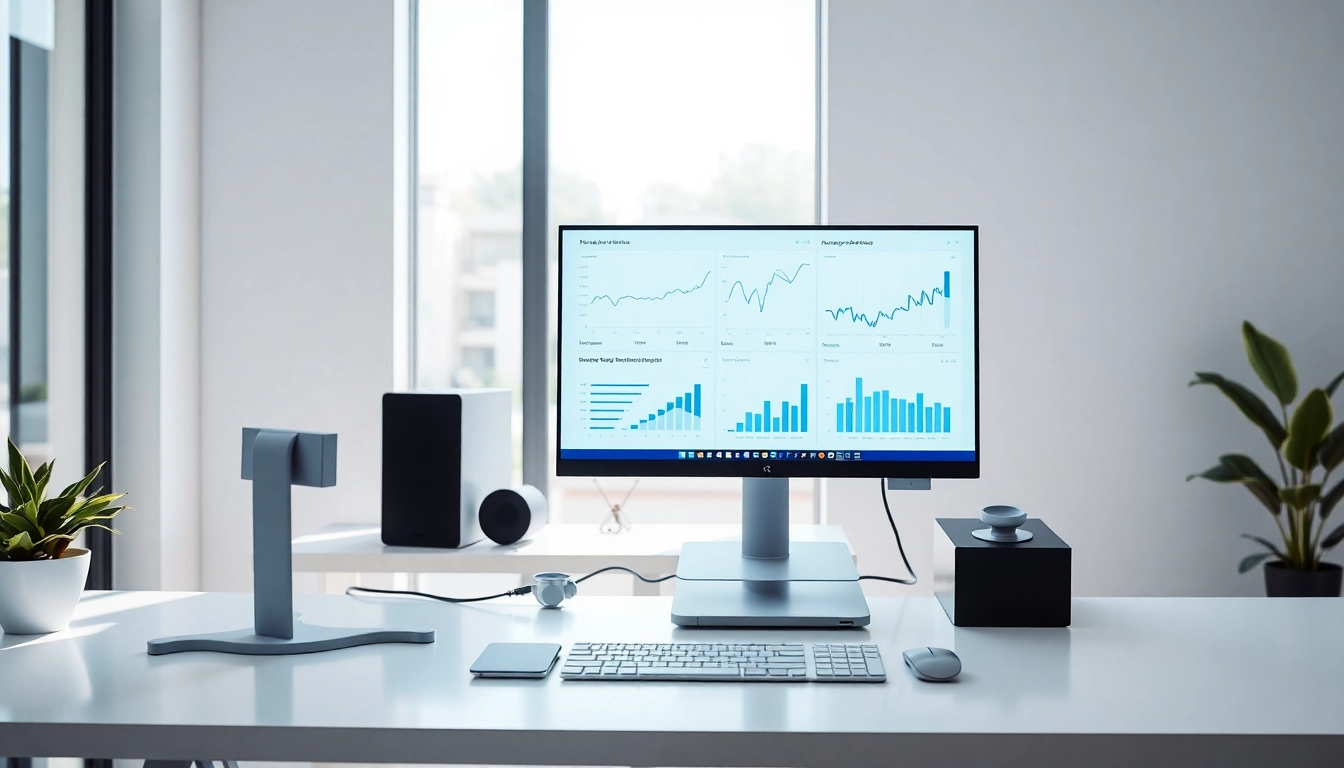Understanding Health Informatics
In the rapidly evolving healthcare landscape, the intersection of technology and health management has given rise to a crucial field known as health informatics. It encompasses a broad range of tools and approaches that leverage data and technology to improve patient care, enhance health services, and streamline workflows in medical environments. As healthcare continues to modernize, understanding the intricacies of health informatics becomes increasingly essential for professionals within and beyond the medical industry. For a comprehensive dive into this ever-relevant field, resources like www.informaticsview.com provide valuable insights and guidance.
Definition and Scope of Informatics
Health informatics can be broadly defined as the discipline that focuses on the acquisition, storage, retrieval, and use of healthcare information to foster better collaboration among a patient’s various healthcare providers. This discipline uniquely combines information technology, statistics, and the social sciences to analyze bio-medical data and subsequently improve healthcare delivery. The scope of informatics extends beyond clinical data alone; it encompasses all aspects of information handling in healthcare settings, from administrative tasks to patient interactions.
Key Components of Health Informatics
The foundation of health informatics rests on several key components that drive its implementation and effectiveness:
- Electronic Health Records (EHRs): These digital versions of patients’ paper charts enable real-time accessibility and streamlined information sharing among healthcare providers.
- Clinical Decision Support Systems (CDSS): These applications provide healthcare professionals with knowledge and patient-specific information intelligently filtered and presented at appropriate times, enhancing decision-making.
- Telemedicine: Technology-enabled services that allow healthcare delivery at a distance, overcoming geographical barriers and enhancing access to care.
- Health Information Exchange (HIE): Facilitates the seamless transfer of healthcare information among different institutions to provide coordinated care.
Importance in Modern Healthcare
The significance of health informatics in modern healthcare cannot be overstated. As patient care becomes more complex, the ability to analyze vast amounts of health data in real-time offers an invaluable tool for improving the quality of care. Comprehensive data management can lead to:
- Enhanced patient safety through more informed decision-making.
- Improved healthcare outcomes by enabling proactive healthcare strategies.
- Increased operational efficiency, allowing for optimal resource allocation and workflow management.
- Greater patient engagement, as patients have more access to their health information.
Core Applications of Informatics in Healthcare
Electronic Health Records and Their Impact
Electronic Health Records (EHRs) serve as a pivotal element of health informatics, allowing healthcare providers to efficiently store and share patient information. EHR systems show considerable promise in transforming healthcare delivery by:
- Reducing Errors: Digital records lower the chances of miscommunication due to illegible handwriting or outdated data.
- Streamlining Administrative Tasks: By automating documentation, healthcare facilities can allocate more time to patient care.
- Facilitating Better Research: EHRs contribute to health studies by providing researchers with access to large sets of anonymized patient data for analysis.
Telemedicine and Remote Patient Monitoring
Telemedicine has emerged as a vital health informatics application, allowing for consultations between patients and clinicians without the need for in-person visits. This technology has gained tremendous traction, particularly due to the COVID-19 pandemic. Key advantages include:
- Accessibility: Patients in remote or underserved areas can access medical expertise without traveling long distances.
- Cost-Effectiveness: Reduced overhead costs lead to savings for healthcare facilities, which can be passed on to patients.
- Continuous Monitoring: Wearable devices linked to telemedicine platforms enable continuous health monitoring, aiding in chronic disease management.
Clinical Decision Support Systems
Clinical Decision Support Systems (CDSS) play a pivotal role in health informatics by improving the quality of care provided by healthcare professionals. They contribute to decision-making through:
- Evidence-Based Recommendations: CDSS tools can deliver patient-specific recommendations based on the latest clinical guidelines.
- Alerts and Reminders: These systems can alert providers to potential medication interactions or allergies, promoting patient safety.
- Data Analytics: Leveraging big data, CDSS can identify patterns that aid in diagnosing and treating various health conditions.
Challenges and Solutions in Implementing Health Informatics
Data Privacy and Security Issues
With the vast amounts of sensitive health data processed continuously, data privacy and security pose significant challenges. Cybersecurity threats can jeopardize patient information. Therefore, robust measures must be implemented:
- Encryption: Encrypting data both at rest and in transit is vital to protect against unauthorized access.
- Regular Audits: Conducting routine security audits can identify and mitigate potential vulnerabilities.
- Employee Training: Ensuring that employees are knowledgeable about data security protocols can significantly reduce the risk of breaches.
Integration with Existing Systems
Implementing new informatics systems can run into significant resistance, particularly regarding compatibility with legacy systems already in use. To overcome this challenge:
- Phased Implementation: Gradual integration allows for troubleshooting without disrupting existing operations.
- Interoperability Standards: Adhering to standards can promote compatibility between new and existing systems.
- Stakeholder Involvement: Engaging all relevant healthcare staff in the process fosters buy-in and smooth implementation.
Training and Educating Healthcare Professionals
The successful adoption of health informatics practices largely hinges on the proficiency of healthcare professionals. Challenges in this area can be addressed through:
- Comprehensive Training Programs: Providing training on new systems and technologies ensures staff members feel confident and capable.
- Access to Online Resources: Institutions can offer ongoing education through webinars, courses, and reading materials to keep employees updated on best practices.
Future Trends in Health Informatics
Artificial Intelligence and Machine Learning
The integration of Artificial Intelligence (AI) and Machine Learning (ML) into health informatics represents one of the most exciting frontiers of healthcare technology. These advances are poised to revolutionize various aspects of patient care:
- Predictive Analytics: AI can analyze historical data to forecast patient outcomes, enabling preventive care strategies.
- Natural Language Processing: Enhanced communication between humans and machines allows medical practitioners to retrieve data using conversational language.
- Personalized Medicine: AI algorithms can analyze genetic information to offer personalized treatment plans tailored to individual patients.
Wearable Health Technology
Wearable health technology is playing an increasingly important role in patient monitoring and care management. Devices like smartwatches and fitness trackers provide real-time health data that can enhance patient engagement and adhere to treatment regimens. Advantages of wearable technologies include:
- Data Collection: Continuous data collection offers healthcare providers insights into patient habits and conditions.
- Proactive Health Management: Patients can take a more active role in managing their health through self-monitoring.
Data Analytics for Predictive Healthcare
Data analytics tools are becoming indispensable in the healthcare sector, providing the ability to mine large sets of health data for actionable insights. Predictive analytics transforms raw data into foresight on trends and potential health risks, thereby:
- Identifying At-Risk Populations: Trends in patient data can highlight vulnerable groups needing targeted interventions.
- Resource Allocation: Predictive models inform better allocation of resources based on anticipated demand.
Resources and Further Reading
Key Organizations and Associations
Several organizations play crucial roles in advancing health informatics globally. Here are some key entities:
- American Medical Informatics Association (AMIA): Focused on improving healthcare by developing the science of informatics.
- Health Level Seven International (HL7): An organization focused on creating standards for the exchange, integration, sharing, and retrieval of electronic health information.
Recommended Books and Articles
Further reading can provide in-depth knowledge and perspectives on health informatics and its applications:
- Health Informatics: A Systems Perspective – A book that explores the intersection of informatics and health systems.
- Digital Medicine: Health Care in the Internet Era – This book examines the impact of technology on healthcare delivery and patient engagement.
Online Courses and Certification Programs
To remain competitive in the field, healthcare professionals may consider enrolling in online courses or certification programs in health informatics. Platforms such as Coursera, edX, and others provide comprehensive programs that cover:
- Fundamentals of health informatics
- Data analytics in healthcare
- Health law and ethics related to informatics



